Chrysler 2008 Annual Report Download - page 33
Download and view the complete annual report
Please find page 33 of the 2008 Chrysler annual report below. You can navigate through the pages in the report by either clicking on the pages listed below, or by using the keyword search tool below to find specific information within the annual report.-
 1
1 -
 2
2 -
 3
3 -
 4
4 -
 5
5 -
 6
6 -
 7
7 -
 8
8 -
 9
9 -
 10
10 -
 11
11 -
 12
12 -
 13
13 -
 14
14 -
 15
15 -
 16
16 -
 17
17 -
 18
18 -
 19
19 -
 20
20 -
 21
21 -
 22
22 -
 23
23 -
 24
24 -
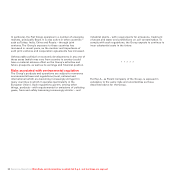 25
25 -
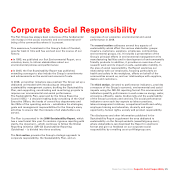 26
26 -
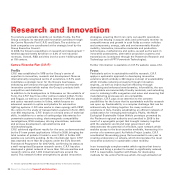 27
27 -
 28
28 -
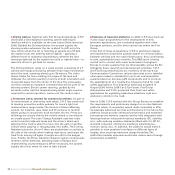 29
29 -
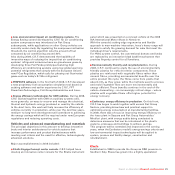 30
30 -
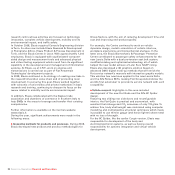 31
31 -
 32
32 -
 33
33 -
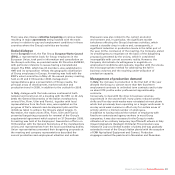 34
34 -
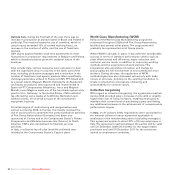 35
35 -
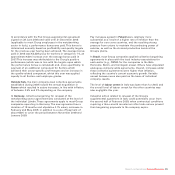 36
36 -
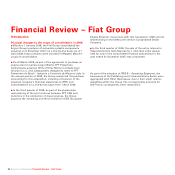 37
37 -
 38
38 -
 39
39 -
 40
40 -
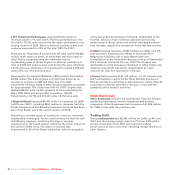 41
41 -
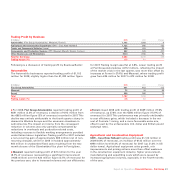 42
42 -
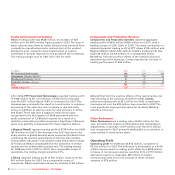 43
43 -
 44
44 -
 45
45 -
 46
46 -
 47
47 -
 48
48 -
 49
49 -
 50
50 -
 51
51 -
 52
52 -
 53
53 -
 54
54 -
 55
55 -
 56
56 -
 57
57 -
 58
58 -
 59
59 -
 60
60 -
 61
61 -
 62
62 -
 63
63 -
 64
64 -
 65
65 -
 66
66 -
 67
67 -
 68
68 -
 69
69 -
 70
70 -
 71
71 -
 72
72 -
 73
73 -
 74
74 -
 75
75 -
 76
76 -
 77
77 -
 78
78 -
 79
79 -
 80
80 -
 81
81 -
 82
82 -
 83
83 -
 84
84 -
 85
85 -
 86
86 -
 87
87 -
 88
88 -
 89
89 -
 90
90 -
 91
91 -
 92
92 -
 93
93 -
 94
94 -
 95
95 -
 96
96 -
 97
97 -
 98
98 -
 99
99 -
 100
100 -
 101
101 -
 102
102 -
 103
103 -
 104
104 -
 105
105 -
 106
106 -
 107
107 -
 108
108 -
 109
109 -
 110
110 -
 111
111 -
 112
112 -
 113
113 -
 114
114 -
 115
115 -
 116
116 -
 117
117 -
 118
118 -
 119
119 -
 120
120 -
 121
121 -
 122
122 -
 123
123 -
 124
124 -
 125
125 -
 126
126 -
 127
127 -
 128
128 -
 129
129 -
 130
130 -
 131
131 -
 132
132 -
 133
133 -
 134
134 -
 135
135 -
 136
136 -
 137
137 -
 138
138 -
 139
139 -
 140
140 -
 141
141 -
 142
142 -
 143
143 -
 144
144 -
 145
145 -
 146
146 -
 147
147 -
 148
148 -
 149
149 -
 150
150 -
 151
151 -
 152
152 -
 153
153 -
 154
154 -
 155
155 -
 156
156 -
 157
157 -
 158
158 -
 159
159 -
 160
160 -
 161
161 -
 162
162 -
 163
163 -
 164
164 -
 165
165 -
 166
166 -
 167
167 -
 168
168 -
 169
169 -
 170
170 -
 171
171 -
 172
172 -
 173
173 -
 174
174 -
 175
175 -
 176
176 -
 177
177 -
 178
178 -
 179
179 -
 180
180 -
 181
181 -
 182
182 -
 183
183 -
 184
184 -
 185
185 -
 186
186 -
 187
187 -
 188
188 -
 189
189 -
 190
190 -
 191
191 -
 192
192 -
 193
193 -
 194
194 -
 195
195 -
 196
196 -
 197
197 -
 198
198 -
 199
199 -
 200
200 -
 201
201 -
 202
202 -
 203
203 -
 204
204 -
 205
205 -
 206
206 -
 207
207 -
 208
208 -
 209
209 -
 210
210 -
 211
211 -
 212
212 -
 213
213 -
 214
214 -
 215
215 -
 216
216 -
 217
217 -
 218
218 -
 219
219 -
 220
220 -
 221
221 -
 222
222 -
 223
223 -
 224
224 -
 225
225 -
 226
226 -
 227
227 -
 228
228 -
 229
229 -
 230
230 -
 231
231 -
 232
232 -
 233
233 -
 234
234 -
 235
235 -
 236
236 -
 237
237 -
 238
238 -
 239
239 -
 240
240 -
 241
241 -
 242
242 -
 243
243 -
 244
244 -
 245
245 -
 246
246 -
 247
247 -
 248
248 -
 249
249 -
 250
250 -
 251
251 -
 252
252 -
 253
253 -
 254
254 -
 255
255 -
 256
256 -
 257
257 -
 258
258 -
 259
259 -
 260
260 -
 261
261 -
 262
262 -
 263
263 -
 264
264 -
 265
265 -
 266
266 -
 267
267 -
 268
268 -
 269
269 -
 270
270 -
 271
271 -
 272
272 -
 273
273 -
 274
274 -
 275
275 -
 276
276 -
 277
277 -
 278
278 -
 279
279 -
 280
280 -
 281
281 -
 282
282 -
 283
283 -
 284
284 -
 285
285 -
 286
286 -
 287
287 -
 288
288 -
 289
289 -
 290
290 -
 291
291 -
 292
292 -
 293
293 -
 294
294 -
 295
295 -
 296
296 -
 297
297 -
 298
298 -
 299
299 -
 300
300 -
 301
301 -
 302
302 -
 303
303 -
 304
304 -
 305
305 -
 306
306 -
 307
307 -
 308
308 -
 309
309 -
 310
310 -
 311
311 -
 312
312 -
 313
313 -
 314
314 -
 315
315 -
 316
316 -
 317
317 -
 318
318 -
 319
319 -
 320
320 -
 321
321 -
 322
322 -
 323
323 -
 324
324 -
 325
325 -
 326
326 -
 327
327 -
 328
328 -
 329
329 -
 330
330 -
 331
331 -
 332
332 -
 333
333 -
 334
334 -
 335
335 -
 336
336 -
 337
337 -
 338
338 -
 339
339 -
 340
340 -
 341
341 -
 342
342 -
 343
343 -
 344
344 -
 345
345 -
 346
346 -
 347
347 -
 348
348 -
 349
349 -
 350
350 -
 351
351 -
 352
352 -
 353
353 -
 354
354 -
 355
355 -
 356
356
 |
 |
Report on Operations Human Resources32
The Group had 198,348 employees at year-end 2008, compared
with 185,227 at year-end 2007, with approximately 33,300 new
hires being made during the year and 27,400 individuals
leaving the Group. The remaining net increase of around 7,200
employees was attributable to changes in the Group’s scope of
operations, which principally included: consolidation of the
Plastic Components and Modules business line by Magneti
Marelli, the insourcing of logistics services by Fiat Group
Automobiles in Italy, and the insourcing of parts distribution
activities by CNH in North America and Latin America.
Approximately 30,000 employees (classified internally as
Professional) have specific professional qualifications, and 44%
of them work outside Italy.
Organizational and managerial changes
In 2008, the Group continued implementation of the
organisational model which, in 2007, resulted in the creation of
Group-level positions to coordinate the principal business
processes, thereby encouraging the sharing of skills and
experience, creating synergies and ensuring increased
collaboration across Sectors.
This central coordination has contributed toward
harmonisation of the decision-making process at Group level
and has played a fundamental role in the identification of
talented personnel within each of the various professional
areas, promoting its internal growth to more effectively
respond to the needs of the organisation. As part of this
process, a global, inter-sectoral review was conducted of 15
professional families enabling, subsequent to selection and
approval by the Group Executive Council, managers and
professionals having the characteristics necessary to cover
certain key positions to be transferred between Sectors.
All human resource management processes are based on the
leadership model which has been in place for the past four
years for all professionals globally. A pilot project has been
instituted at certain European entities with the model being
extended to include all white-collar employees.
Training
Investment in training to support Group activities and
individual professional development totalled about €91 million.
Isvor Fiat provided training, consulting and professional
support representing an equivalent of 18,686 days of training
and ‘on-the-job’ support. A further 89,104 hours of web-based
distance learning were also provided to 17,825 users.
Grants and Scholarships
The Fiat Grant and Scholarship Programme for children of
Group employees was a well-received initiative once again this
year. In addition to Italy, other countries which have
participated so far include France, Spain, Poland, Belgium,
Brazil, North America, China and the United Kingdom. In 2008,
a total of 1,148 grants were awarded (351 in Italy and 797
outside Italy) amounting to €2.2 million.
Industrial relations
A constant dialogue was maintained with trade unions and
employee representatives at company level throughout the
year to achieve consensus-based solutions to manage the
impact on workers of various measures taken to respond to
changed market conditions. Discussions in the first half of the
year mainly focused on measures to meet growing market
demand through increased work flexibility at manufacturing
plants, mainly through utilisation of overtime, fixed-term
workers, and increase in the number of shifts. In the second
half – due to the global financial crisis and its impact on the
real economy which exposed the Group to a significant, abrupt
and unexpected reduction in orders and subsequent decline in
production levels – discussions with trade unions mainly
focused on the gradual reduction of agency workers and
workers with fixed-term employment contracts, and the
implementation of measures to suspend production in some
European countries and in North America.
Human Resources
